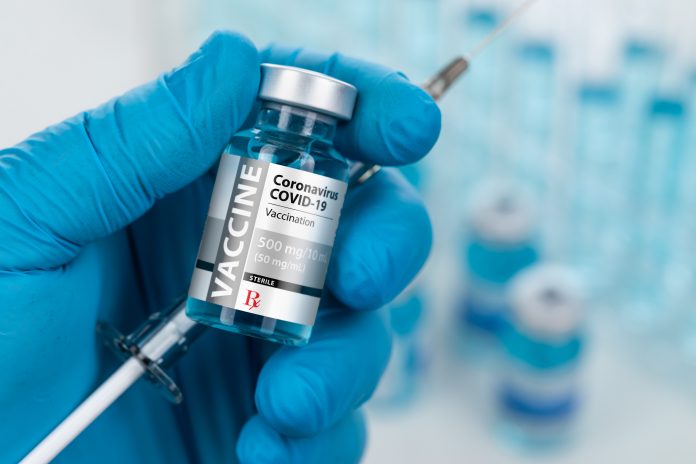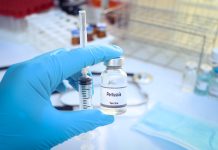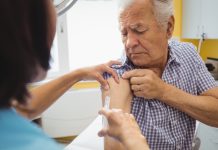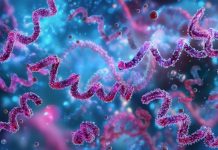The challenges of vaccination logistics during the COVID-19 pandemic are charted in this updated view, written by Zisis Kozlakidis and John Litaker
Vaccination plays an important role in combatting infectious diseases and there is consensus that vaccination will disrupt the person-to-person transmission of the SARS-CoV-2 virus and end the COVID-19 pandemic. However, the eventual success of a global vaccination campaign will depend on the rapid production and worldwide distribution of pandemic specific vaccines as well as “last mile” mass vaccination efforts.
In the case of SARS-CoV-2 vaccine development and production, it became evident early on that successful production outcomes could be achieved in a relatively short period of time given sufficient resources, regulatory support and a global focus, particularly with the use of mRNA technology. In fact, the manufacturing and distribution success of COVID-19 vaccines was remarkable. In the span of less than a year, vaccines were manufactured and distributed worldwide. However, the ability to get the vaccine into people’s arms quickly and efficiently at the local level – the so-called “last mile” – proved to be a struggle. An updated view of “last mile” vaccination logistics is presented here.
Preparation as prevention
One question frequently asked is “Why weren’t public health systems better prepared for mass vaccination activities by January 2021?” After all, experts anticipated that COVID-19 vaccines would likely be available by this date. In addition, the 2009 novel H1N1 pandemic supported the view that mass vaccination clinics would be needed to achieve high levels of vaccine-induced herd immunity. For example, the 2009 pandemic relied on a vaccine distribution model that included doctors’ surgeries, pharmacies, and public health clinics. In the United States, this resulted in a national vaccine coverage rate of only 41.2%, (1) far below the 70% experts estimated would be needed to achieve vaccine-induced herd immunity for COVID-19. Yet, mass vaccination clinics have the breadth and scope to achieve a high level of vaccine-induced herd immunity quickly and efficiently.
During the first nine months of the current pandemic, pharmaceutical companies solved the manufacturing and cold chain management issues feared to be a potential bottleneck for a successful global vaccination campaign. Instead, the “last mile” of putting shots into people’s arms became the bottleneck. Indeed, March 2020 kicked off the anticipated nine to 12-month window for vaccines to be manufactured and distributed. This provided a year to prepare for the distribution of vaccines and the development of mass vaccination clinics at the local level (2).
Why didn’t public health have a system of mass vaccination clinics established and ready to use once national guidelines allowed for mass vaccination efforts? Firstly, public health messaging did not match the realities that people were seeing on the ground. For example, public health messages aimed at increasing perceptions of risk severity were often counteracted by daily personal experience which did not confirm the threat. Therefore, individuals, beyond those most at risk may not have realised the benefits of vaccination, not only to them as individuals but to society as a whole. Secondly, public health systems around the world were strained and did not have staff or resource capacity to meet the scale, duration and demands of a pandemic lasting upwards of two years. For example, because of demands associated with testing, case investigation, and contact tracing, there was little surge capacity remaining to prepare for, staff, and conduct mass vaccination clinics. In addition, initially in the United States at least, national and state guidance focused on the H1N1 model of vaccine distribution, not mass vaccination clinics. As such vaccination logistics and operational activities were less attuned to the reality of what was happening on the ground and what needed to happen to achieve 70% vaccine-induced herd immunity.
A “last mile” vaccine distribution system ‘fit-for-purpose’
As in the 2009 influenza pandemic, the distribution of available vaccine supply started in hospitals for healthcare professionals and front-line staff. It was quickly extended to high-risk individuals and additional settings, as identified by national authorities. Yet, mass vaccination clinics at the local level for the general public were not available until much later. This time lag for mass vaccination operations was pointed out through a number of scientific publications and certainly happened over many different locations worldwide. For example, in the U.S., the anticipation was to provide the mRNA vaccines through the normal distribution network, using the H1N1 strategy which was successful in the recent past. However, a twofold increase in vaccine penetration is needed for COVID-19 as compared to the single dose for H1N1. To put it simply, there was not enough capacity in the normal distribution network to reach herd immunity with a two-dose regimen, if H1N1 plans were to be followed faithfully.
It has to be emphasized, that such decisions are not merely technical, but necessarily involve policy, public health and ethics as an integrated apparatus. Furthermore, planning decisions about distribution will always be made – at least in the first months of any pandemic – under conditions of some uncertainty about the virus, transmission and its immunological impact in the short- and long- term, as well as some potentially remaining questions relating to vaccine safety and effectiveness.
From the unknown towards the known
The demand for vaccination in some parts of the world appears to be waning, while in other parts of the world, a lack of supply and access mean that mass vaccination efforts have hardly yet begun. Where vaccination efforts are just starting perhaps there is a lesson learned from those countries that did not embrace mass vaccination clinics early on. This lesson learned is to get as many shots in people’s arms as quickly as possible, as early as possible. Demand will wane when the daily personal experience no longer matches the public health messaging and when disease mortality and morbidity begin to decrease. Perception is reality, even if the pandemic is far from being over.
Finally, as authorities worldwide begin to undertake the transition from COVID-19 emergency operations to a more programmatic set of operations, the discussion about the impact of COVID-19 in the community and the world needs to continue. Singapore is one of the first countries to start this discussion, moving away from case counts to focusing on acuity, hospitalisation (both ward and ICU), and mortality. Part of this discussion, however, also needs to include the possibility that new strains or variants of COVID-19 will require transition back to COVID-19 emergency operations. Boosters may be needed. We must learn the lesson from the initial outbreak and make sure that mass vaccination clinics are a core component of response efforts. The “last mile” is the lynchpin to achieving herd immunity and person-to-person disruption.
References
1) McIntyre, Anne F., et al. “Seasonal Influenza Vaccination Coverage—United States, 2009–10 and 2010–11.” MMWR Surveill Summ62.suppl 3 (2013): 65-68.
2) Litaker, John R., et al. “Using health insurance network provider data and public data sets to identify SARS-CoV-2 vaccinators in the USA.” Frontiers in Public Health 8 (2020).











